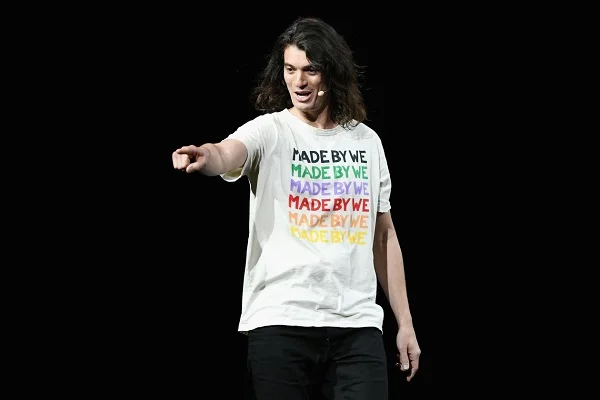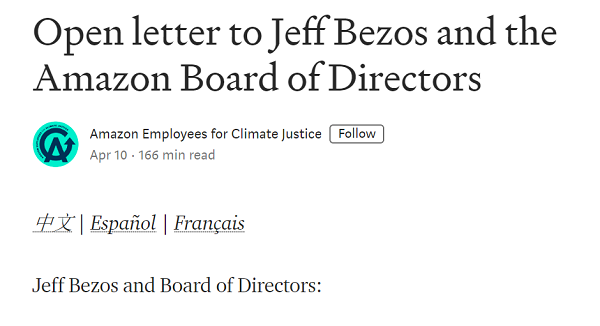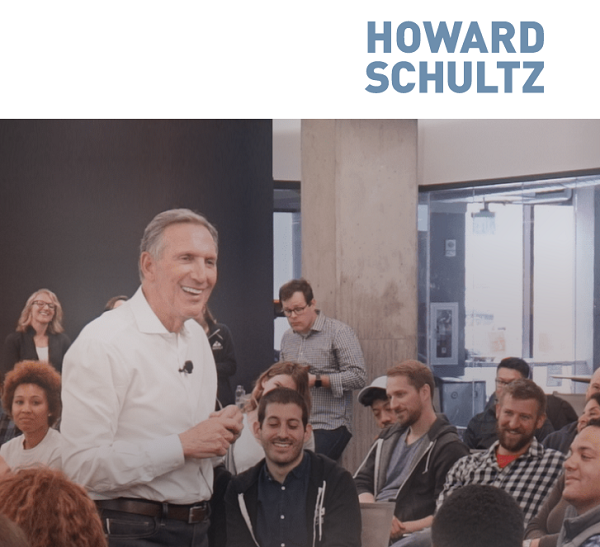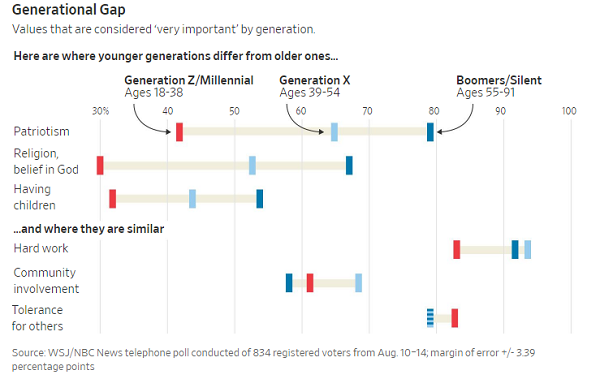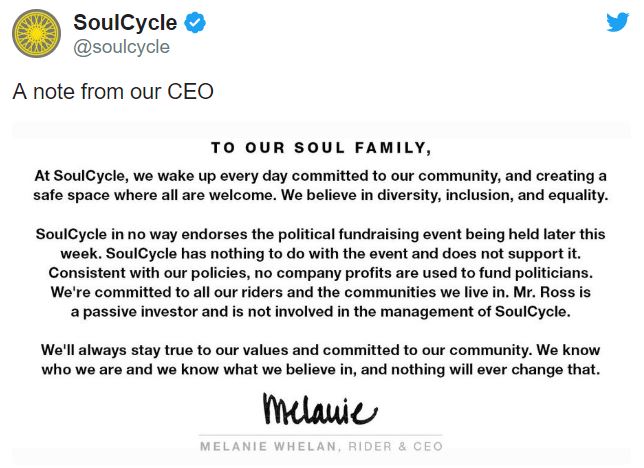Harvard Admissions Decision
A federal judge has decided that Harvard did not discriminate against Asian students during the admissions process. The Crimson, Harvard’s student newspaper, provides an analysis of the case.
In its defense, Harvard revealed its admissions process, which included personality ratings. The plaintiff group, Students for Fair Admissions, criticized the system as disadvantaging Asian students. However, in her decision, the judge cited testimony from admissions counselors, shown here.
The judge explained the role of diversity in her decision:
Ensuring diversity at Harvard relies, in part, on race-conscious admissions. The use of race benefits certain racial and ethnic groups that would otherwise be underrepresented at Harvard and is therefore neither an illegitimate use of race or reflective of racial prejudice.
Although she decided in Harvard’s favor, the judge did provide recommendations to Harvard:
She recommended that admissions officers participate in implicit bias trainings, maintain clear guidelines on the use of race, and monitor any race-related statistical disparities.
She said the task of considering race in admissions is a “a particularly delicate job” to execute lawfully.
Discussion:
WeWork Co-Founder and CEO Steps Down
WeWork announced that Adam Neumann will leave his position after controversy about the company’s financial situation and the co-founder and CEO’s behavior. Within a week, the company went from preparing for an IPO to facing criticism that led to this ouster and a delayed public offering.
The company valuation has been reduced from about $47 to $15 billion based on governance issues and what the Wall Street Journal calls “ballooning losses.” The Journal also reported on Neumann’s “eccentric behavior,” including a heavy-party lifestyle that recently involved bring marijuana on a plane to Israel and saying that he might like to be the prime minister.
In its news release, WeWork provided scant information and a few quotations, including this from Neumann:
“As co-founder of WeWork, I am so proud of this team and the incredible company that we have built over the last decade. Our global platform now spans 111 cities in 29 countries, serving more than 527,000 members each day. While our business has never been stronger, in recent weeks, the scrutiny directed toward me has become a significant distraction, and I have decided that it is in the best interest of the company to step down as chief executive. Thank you to my colleagues, our members, our landlord partners, and our investors for continuing to believe in this great business.”
Discussion:
Compare the company’s news release to others announcing CEO departures. How does this one differ, and why would the company take this approach?
What are the communication objectives of Neumann’s statement? How well does his quote meet those objectives? What else, if anything, should Neumann say or do?
Amazon Response to Employee Walkout
Like many around the world during the Global Climate Strike, hundreds of Amazon employees walked out of their offices yesterday. Employees have been urging Amazon leaders to take more steps to reduce fossil fuel dependency and wrote an open letter back in April. The pressure seems to be working.
On Thursday, CEO Jeff Bezos announced The Climate Pledge, with the following commitments:
Commits to net zero carbon by 2040 and 100% renewable energy by 2030
Orders 100,000 fully electric delivery vehicles, the largest order ever for electric delivery vehicles
Invests $100 million in reforestation projects around the world to begin removing carbon from the atmosphere now
Launches new sustainability website to report progress on commitments
The Pledge encourages other businesses to sign on, with Amazon leading the way. Bezos said, “We’re done being in the middle of the herd on this issue — we’ve decided to use our size and scale to make a difference.” Amazon employees reacted positively.
Discussion:
Analyze the employees’ open letter. What persuasive strategies do they use? Look for examples of logical argument, emotional appeal, and credibility. What organizational strategies do the writers use?
The Amazon announcement doesn’t mention employees’ influence in the decision, although news articles and employees make the connection. Should Bezos include this recognition? Why or why not?
Describe a CEO’s dilemma in situations like these. When is it appropriate for leaders to meet their employees’ demands, and when should they resist? Did Bezos take the best course of action?
CEOs Advocate for Gun Safety
CEOs are encouraging senators to pass stricter gun regulations, such as background checks and a “Red Flag” law that allows guns to be taken from someone who poses a threat. The leaders of 145 companies sent a letter asking for the following:
“That’s why we urge the Senate to stand with the American public and take action on gun safety by passing a bill to require background checks on all gun sales and a strong Red Flag law that would allow courts to issue life-saving extreme risk protection orders.”
The Trump Administration has implemented a ban on bump stock devices, which allows a shooter to fire in more rapid succession, and President Trump has supported more thorough background checks for gun buyers.
Discussion:
What’s your view of CEOs taking on this activist role? What is driving them, and what are the potential risks?
What observations do you have about the companies that are represented—and perhaps about those that are not?
Analyze the letter by considering the audience, communication objectives, organization, writing style, and so on. What works well, and what could be improved?
Howard Schultz Update
Former Starbucks CEO Howard Schultz has decided not to run for president, after all. He communicated the news in an email and on his website. In the email, fonts changed in the middle, but it looks better online. At right are the first few paragraphs.
The full message explains his reasons, which include the election process and his health.
Discussion:
Analyze the message. Consider the audience, communication objectives, writing style, organization, and reasoning. What works well, and what can be improved?
At what point does he announce the news?
What are his strongest and weakest arguments for not running for president?
What causes fonts to change in the middle of an email, and how can you avoid this in your own writing?
Creative Charts
The Wall Street Journal created a chart to show what Americans value—and how those values have shifted over time. The graphic is a variation on a line chart with generations represented by color.
Understanding the chart may take a while. At first glance, the generation identifiers at the top look like headings, but they point to small bar colors.
The information is interesting, and some points probably aren’t surprising. Older Americans value patriotism, religion (which the poll describes as “belief in God”), and having children more highly than do younger Americans.
Discussion:
Assess the graphic design. How intuitive do you find the chart? What works well, and what could be improved?
What are your reactions to the data? What do you find surprising—and not?
What implications do you see for companies’ attempts to keep employees engaged at work?
The Purpose of the Corporation
The Business Roundtable published a statement, The Purpose of the Corporation, signed by 181 of its 193 members. The Roundtable, a corporate lobbying group, includes CEOs of the largest U.S. companies.
In essence, the CEOs write that they have responsibilities beyond shareholders—to customers, employees, suppliers, and communities (including the environment). The statement is a step to improving the perception of businesses as solely driven by creating shareholder value through short-term profits.
Skeptics abound. A writer for the Washington Post called the statement a “truism”:
“What’s significant about the statement is what it does not say. The corporate signatories do not suggest in any way weakening the fiduciary duties of the boards and managers of ordinary for-profit shareholder corporations to manage such companies’ affairs for shareholders’ benefit.”
The CEO of Allstate and head of the U.S. Chamber of Commerce wrote an opinion piece in the New York Times encouraging businesses to pay people more if they’re serious about serving more stakeholders.
A writer for Forbes argued that these companies are multinationals and have global responsibilities as well. He also accused the executives of being self-serving, warding off criticism about executive compensation.
Others noted company CEOs who didn’t sign, for example, Alcoa, Blackstone, GE, NextEra, Parker Hannifin, and Wells Fargo (whose representative said the CEO is interim and wasn’t asked to sign). Some companies, for example, Kaiser and State Farm, say they didn’t sign because they don’t have shareholders.
Discussion:
What’s your view of the statement: significant, placating, diverting, or something else?
Assess the statement itself. Consider the audience, purpose, writing style, organization, and so on. What works well, and what could be improved? What’s extraneous and what’s missing?
Backlash After President Trump Fundraiser
Equinox and SoulCycle customers are not happy about a fundraiser for President Trump sponsored by the companies’ owner, the chairman of a real estate firm. Threats of boycotts and cancelled memberships provoked quick responses from both companies.
SoulCycle CEO Melanie Whelan also said, “SoulCycle has nothing to do with the event and does not support it. … We know who we are and we know what we believe in, and nothing will ever change that.”
Capitalizing on the brands’ distress, other fitness companies are offering discounts and free trials to try to win business.
Discussion:
More company executives feel inspired towards political activism. What are the advantages and risks?
Did the real estate company owner, Stephen Ross, act inappropriately by hosting a fundraiser? Why or why not?
Analyze the companies’ statements. What persuasion strategies do they use to rebuild each brand?
Compare the statements. Does one work better than the other? What criteria do you use to compare them?
Another Blackface Disaster
Belgium’s Africa museum hosted an event for which people arrived in pith helmets, blackface, and other offensive and stereotypical clothing. Understandably, the Congolese community is upset. As one representative said, "Ethnic, exotic or African is not a costume that you can put on and take off.” You can read about Belgium’s occupation of the Congo to understand the history.
The party was organized by a separate company, Thé Dansant, and one organizer defended the party: “Even if one person painted his face black, it was not meant to be offensive. Many people of African origin were enthusiastic about the concept and were present.”
So far, the Royal Museum of Africa is trying to distance itself from the event and hasn’t issued a statement or apology.
Museum image source.
Party image source.
Discussion:
What’s your view of Thé Dansant’s response?
What is the museum’s accountability? What should the leaders do or say?
Employees Pressure Walmart to Consider Role in Gun Violence
Walmart is in a tough spot after recent shootings. Some employees are pressing the company to do more to fight gun violence, but no policy changes are planned. After previous attacks, Walmart stopped selling assault-style weapons and raised the minimum age to purchase guns and ammunition, but it’s unclear whether the leaders will do more. Employees are asking Walmart to stop selling firearms and to disallow customers from carrying guns into the stores.
The company seems divided about employees’ activism. Chief Executive Doug McMillon wrote, ”We are proud to be woven into the American fabric as a place for all people. We are more resolved than ever to foster an inclusive environment where all people are valued and welcomed.” At the same time, the company blocked two employees’ access to Slack, encouraging employees to use “more constructive ways for associates to offer feedback such as emails or conversations with leaders.”
A study recently published in the International Journal of Business Communication found that employees are more likely to “express dissent to managers and coworkers” when they are more socialized in the company and when they believe their company is “more ethical and reputable.”
A Wall Street Journal article explains the risk for Walmart to take more action against gun sales:
“[A]ny change to its gun policies risks alienating Walmart’s core customers, who often live in more conservative-leaning rural and suburban communities. The company faced some consumer backlash after raising the minimum age to purchase guns to 21.”
Discussion:
How can the company balance employees’ and customers’ perspectives? What else, if anything, should company leaders say and do?
Did the company do the right thing by blocking Slack access? In what ways are email and conversations more or less “constructive”?
What leadership character dimensions are illustrated by this situation?
Capital One's Response to the Breach
A hacker got access to 140,000 Capital One customers’ credit information and social security information, and about 106 million people were affected by other leaked information. Officials arrested Paige A. Thompson, who goes by “erratic” and was a former Seattle technology company software engineer.
In a bar chart, a BBC article puts this breach in context of others. Capital One’s press release describes the company’s quick response:
“Capital One immediately fixed the configuration vulnerability that this individual exploited and promptly began working with federal law enforcement.”
The release also includes a statement from Chairman and CEO Richard Fairbank:
"While I am grateful that the perpetrator has been caught, I am deeply sorry for what has happened. I sincerely apologize for the understandable worry this incident must be causing those affected and I am committed to making it right."
In addition, as expected, the release includes information for customers, offers free credit monitoring, and provides an FAQ.
Discussion:
Analyze the press release. Consider the audiences, objectives, organization, tone, and so on.
How well does Fairbanks demonstrate humility in the press release? What other leadership character dimensions are illustrated? How well does he inspire confidence in Capital One?
Analyze the BBC chart shown here. What works well about the chart, and what else would be helpful to understand these breaches in context?
How to Deal with Being "Ghosted"
Too often, employers stop responding to candidates. Even after an in-person interview, candidates never hear back. The CEO of a job search platform advises people to follow up in a few ways:
Send one email a week. Be thoughtful about your messages to express interest; maybe share new research about the company .
Try different channels. For example, send a LinkedIn message instead of email, but only once.
Reach out to others. Contact another recruiter or the hiring manager directly.
All of these actions come with risk, but the writer argues, and I agree, that the risk is worth it. None of these follow-ups are too annoying, and you may turn the tide in your favor.
Discussion:
Why do you think employers ghost applicants? Consider what incentive they have to follow up.
What’s your view of these follow-up approaches? Which are you more or less comfortable doing?
Suicide Among France Télécom Employees
Management couldn’t fire employees at France Télécom, so, according to critics, they harassed them hoping they would quit. But at least 35 committed suicide under the pressure, and some reports claim the number is closer to 60.
France Télécom was privatized and rebranded as Orange in July 2013. The company wasn’t keeping up with technological changes and, according to executives, were saddled with state employees, who are protected from termination. In 2007, Didier Lombard, the former chief executive of France Télécom, said they would get to their ideal number of layoffs “one way or another, by the window or by the door.”
A New York Times article describes the environment: “A grim universe of underemployment, marginalization, miscasting and systematic harassment was established at the huge company, according to testimony at the trial.” Managers tried changing job responsibilities for some workers, but employees were left without tasks or with tasks they couldn’t do.
With France’s high unemployment rate, employees felt they had few options. Union members, shown here, express their support during the trial in Paris. We’ll see whether the judges find company executives guilty.
Discussion:
How did management justify its practices? On the other hand, how could they have acted differently?
What experience do you have with international labor laws? Describe differences and how they might affect business decisions.
Should France reconsider its lifetime employment protections?
What leadership character dimensions are illustrated by this situation?
Noncompete Agreements for Interns
A Wall Street Journal article reports that college interns are increasingly asked to sign agreements that restrict their job choices in the future. “Noncompete, nondisclosure and forced arbitration agreements,” which have been common for senior-level employees, have made their way down the ranks.
Now, interns are asked to sign agreements on their first day with a company, and they don’t always understand what they’re signing. An agreement can prevent a new grad from, for example, accepting an offer with a competitor within a geographic region.
Some agreements are important for companies to protect their intellectual property and preserve confidentiality, but critics say they go overboard. Also, such agreements may not hold up in court, particularly when they affect low-skilled workers.
Bottom line: interns should be careful about what they sign. An agreement may be more of a deterrent and might not inspire legal action, but students shouldn’t have to feel as though their choices are limited right after graduation.
Signing image source.
Noncompete image source.
Discussion:
What’s your experience with these employment agreements?
What would you do if asked to sign one?
What should companies do differently to protect themselves?
How to Navigate Multiple Offers
It’s one of those “good problems”: getting more than one job offer. But navigating the relationships and making a decision can be tough.
A Wall Street Journal article tells the story of a man faking his own death to avoid telling a company that he didn’t want to take the job after accepting an offer. According to an executive at the staffing company Robert Half, “ghosting” a prospective employer is most common among people out of school between two and six years. More and more, employers receive last-minute text messages or no-shows on the first day of work.
A management consultant believes the trouble is that college students lack the communication skills to handle these situations more professionally: “This is the generation that breaks up by text message, so in a professional context, to have to let someone down or give bad news was terrifying.”
Twice this past semester, students asked me for advice in reneging offers. Overall, I’m not a fan of the tactic. To me, it’s an issue of integrity: when students make a commitment to one employer, they shouldn’t change their minds when a better offer comes along. I also worry about their reputation in the industry—and whether their expectations will be too high for the new job, and they’ll end up disappointed. At Cornell, students also give up their access to career services in the future when this happens.
But students do what is best for them. What matters after the decision is how it’s communicated. I always suggest a phone call rather than an email, which takes courage. A direct, honest approach is best, with an apology and some understanding of how the decision affects the employer, who’s left with an unfilled position and additional recruiting time.
Ideally, students get offers at the same time with the same decision deadlines, but of course, that’s not always the case, and comparing offers becomes challenging. The WSJ article recommends these practices for evaluating and accepting job offers:
DO
* Make clear early what you’re looking for in a new job.
* Ask employers their timeline for making a decision.
* Express appreciation and enthusiasm when receiving an offer.
* Take time to assess each offer carefully, weighing both financial and quality-of-life factors.
DON’T
* Communicate important decisions by text or email.
* Try to pit one employer against another in a bidding war.
* Respond to a job offer by announcing that you already have a competing one.
* Base your decision solely on pay.
Discussion:
Have you been in a situation of having multiple offers? How did you handle it?
Have you reneged on an offer? How did you communicate the decision, and how did the employer react?
What other advice would you give students who have multiple offers?
Boeing at the Paris Air Show
After two fatal plane crashes involving its 737 Max jet, Boeing is trying rebuild its image, and the company made some headway at the Paris Air Show, an international aircraft sales event.
Company leaders are coming closer to admitting mistakes more directly. CEO Dennis Muilenburg said, “We clearly had a mistake in the implementation of the alert.” Muilenburg also admitted that company communications were “inconsistent” and “unacceptable.” Kevin McAllister, the company’s head of commercial aircraft, said, “We are very sorry for the loss of lives as a result of the tragic accidents...our thoughts and our prayers are with their families," and "Our priority is doing everything to get this plane safely returned to service. It is a pivotal moment for all of us.”
At right is a video of McAllister discussing future plans.
Illustrating confidence in the plane, IAG, which owns British Airway, ordered 200 new 737 Max jets, worth about $24 billion at list price. Airbus wants a chance to bid, and we’ll see whether the request is granted.
Discussion:
Based on this and other news reports, how well is Boeing recovering from its crisis? Read more about reactions to the IAG order to help inform your conclusion.
Analyze Kevin McAllister’s communication in the video. Compare his style and approach to Dennis Muilenburg’s. What similarities and differences do you observe?
VW's New Ad
Volkswagen is still trying to rebuild its image after the emissions scandal in 2015. A new advertising campaign tackles the issue directly, beginning with audio news reports from that time. But the focus, described on YouTube, is on the future: “Every negative has a positive. Learn more about our all-electric vehicles and our plans to help make a better tomorrow at vw.com #drivefortomorrow #vw.”
With an emphasis on innovation, the ad is set to Simon and Garfunkel’s classic song, “The Sound of Silence.” Viewers can imagine company engineers during the past few years creating a new line of electric cars— while VW executives said little about the controversy.
The senior VP of marketing for VW of America acknowledged that the ad is risky but explains the rationale:
“[w]ithout mentioning the past...we would never have the credibility or authenticity to move forward with the brand. Through the last three-and-a-half years or so we kind of operated as usual in the consumers [sic] eye. We kept a very consistent message in the marketplace but didn’t really have a powerful point-of-view as a brand.”
Discussion:
What’s your view of VW’s new ad campaign? Did the company make the right decision by invoking the scandal?
Other companies facing scandals, such as Uber and Wells Fargo, placed large apology ads, but VW didn’t take this approach. Why do you think that may be the case? Compare VW’s strategy to other recent recovery campaigns.
Restaurant Owner Forgives Manager for $4,710 Mistake
The manager of Hawksmoor Manchester steakhouse accidentally served a $5,000 bottle of wine when the guests ordered one priced at $290. The owner forgave her publicly, on Twitter.
Naturally, the conversation doesn’t end there. Jokes abound, one announcing that the manager has since been placed in an “on-site incinerator.”
Others pounced on the expensive wine and criticized the restaurant, to which the owner responded in a tweet:
I’m sure you’re all getting tired of this now, so one last thing, to the people who put homelessness in Manchester next to ‘£4500 wine?!’ and suggesting we have no values: we’ve raised well over £1m for @ACF_UK, work with @WoodSt_Mission and @notjustsoupMCR. We have values.
Discussion:
What leadership character dimensions are demonstrated by this story?
How well did the owner respond to criticism?
Leadership Challenge at Uber
A New York Times article describes discomfort among Uber’s leadership as the company plans to go public. Founder and former CEO Travis Kalanick wanted to join the company to ring the opening bell at the New York Stock Exchange, a tradition for IPOs. Kalanick still holds a seat on the board and, as founder, he wanted to participate in the company’s joyous moment—and to bring his father.
Current CEO Dara Khosrowshahi denied the request. For two years, Khosrowshahi has been trying to shed negative public perceptions of Uber, partly attributed to Kalanick’s leadership style and the company’s “bro-culture.”
The article describes a fractured board that didn’t fully support Khosrowshahi and a company that has yet to turn a profit, losing revenue on almost every car ride. Uber follows Lyft’s recent IPO, which has lost about $26 per share since its IPO in March.
Discussion:
Did Khosrowshahi make the right decision? Why or why not?
Consider Kalanick’s perspective. What’s his point of view? Should he have asked at all?
What leadership character dimensions are illustrated by this situation?
Whistleblowers at Boeing
On The Daily podcast, a former quality manager at Boeing describes safety concerns and efforts to report them. He is one of more than 12 employees the New York Times reporter interviewed who had raised issues internally and with the Federal Aviation Administration (FAA) before the 737 MAX crashes—and dating back to the 787 Dreamliner, which was introduced in 2007.
Employees complained about debris left inside aircrafts, even as planes were going on test flights and getting ready for delivery, and about missing and doctored defective parts. The reporter describes a company under pressure taking serious safety shortcuts.
According to U.S. Department of Labor data, whistleblowers have little success. This chart shows a very small percentage of government-reported cases considered of “merit,” although in the table below the chart, the author tells us that cases that are “settled” or “settled other” (a nonstandard procedure) should also be considered winners. Still, it’s a small percentage in light of what it takes to come forward to file a complaint.
Discussion:
What’s your view of Boeing? Some employees say they felt proud when they first worked at the company, and now they are embarrassed. How, if at all, does this news change your perception of the company?
What does it take to be a whistleblower? What is at stake, and what are the potential rewards?
Assess the chart. Who is the audience, and what are the communication objectives? How could you change the chart to improve readability? For example, consider how the 3D effect might change how we interpret the data.



